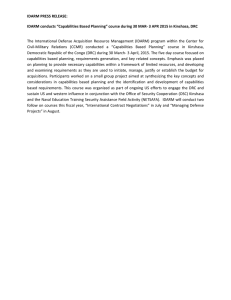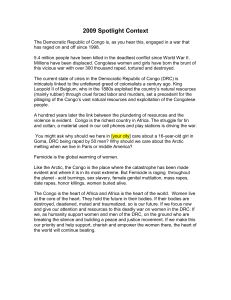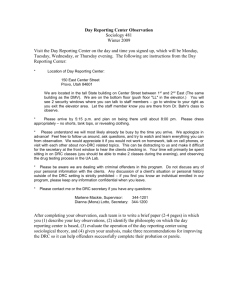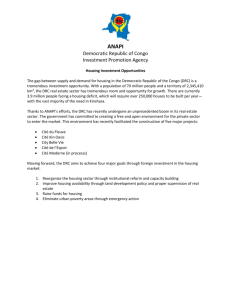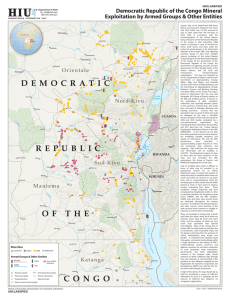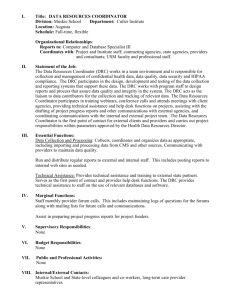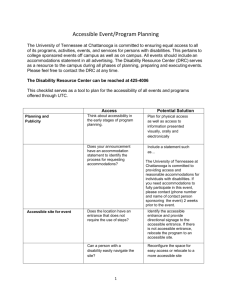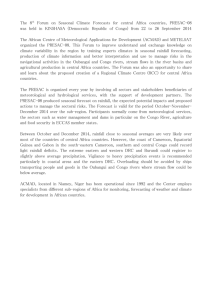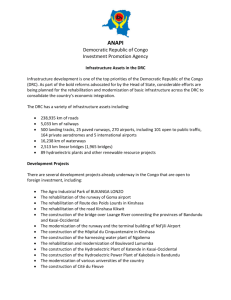Barriers to Adoption of Family Planning among Women in Eastern
advertisement
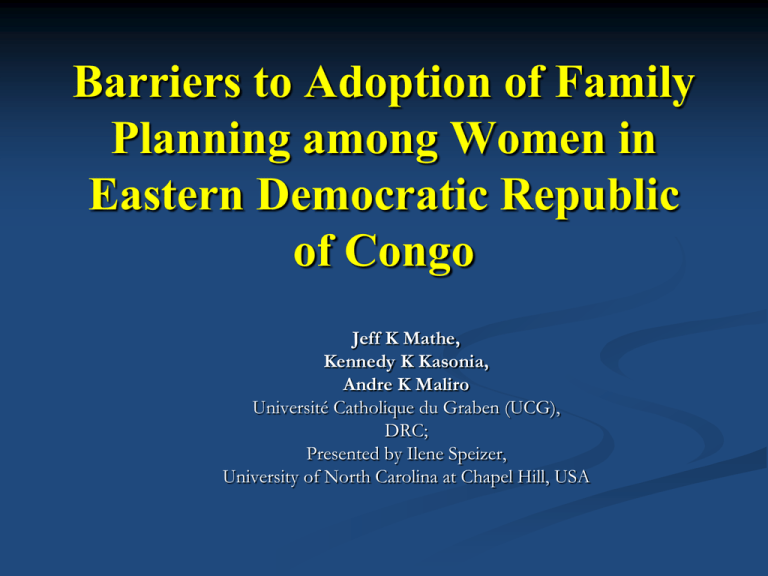
Barriers to Adoption of Family Planning among Women in Eastern Democratic Republic of Congo Jeff K Mathe, Kennedy K Kasonia, Andre K Maliro Université Catholique du Graben (UCG), DRC; Presented by Ilene Speizer, University of North Carolina at Chapel Hill, USA General Background DRC: one of the largest countries in Africa(2.345 million sq Km). Capital City: Kinshasa Shares borders with nine countries: To the east: Uganda, Rwanda, Burundi, and Tanzania To the west: Congo To the south: Zambia and Angola; To the north: Central African Republic and Sudan Total population >60 million High population growth since the 1970s: Growth rate is 3%. Projected to be among the 10 most populous countries in the world by 2050 General Background DRC health system destroyed by years of neglect and conflict. Health indicators are among the worst in the world: Average fecundity: 6.3 * FP: High level of knowledge on contraceptives (82%) but low CPR (7%)* Infant mortality Rate: 148 per 1,000 live births* Maternal mortality ratio: 549/100,000 live births* * Latest DRC DHS 2007 General Background The above DHS data apply to the whole country; Information specific to the eastern part of DRC is lacking DHS Results may not be representative enough to conclude the above for Eastern Democratic Republic of Congo, and specifically for the city of Butembo Study Objectives To assess the KAP about FP among women delivering in Butembo. To determine their preferred FP methods used or to use in the future. To determine their source(s) of information for modern contraceptive methods. To estimate the degree of unmet need To determine whether FP is being promoted by health workers Methodology Cross-sectional survey conducted in June 2010 in the city of Butembo, Questionnaire was developed, and pretested. A total of 53 Maternities in the city were included in the survey. Interviewed number proportional to number of deliveries at facility Women provided informed consent All approvals to conduct the survey were obtained Data entry, analysis done with EPIINFO 3.5.1 Key Findings Demography 572 women were interviewed. Almost two-thirds of respondents (64%) were from urban areas of the city. Their mean age was 26.7 (range: 14 – 48). Most of the women were married (62%) and had some degree of education (83%). About two-thirds (60%) were Catholic and the rest Protestant. The mean daily expense was 4.6 US$ (range: 1 – 25 US$). Degree of Knowledge about Family Planning Calendar (fertile period awareness) Condom, Male Pills Injectables Implants BTL Withdrawal Condom, Female IUCD Others Breastfeeding (LAM) Diaphragm Vasectomy 56.1 42.3 32.9 25.9 18.4 10.5 10.3 10.3 8.2 3 2.3 1.4 0.7 Source of information about Family Planning Friends Nurse School Other Relative Radio Doctor Church Newspaper/Book TV 50 32.3 14 5.4 4.5 3.1 2.6 2.4 1.9 1.6 Use of Family Planning and Preferred Methods Traditional Methods 64% Modern Methods 36% Modern Methods Used Condom, Male 25.3 Pills 11.5 Injectables 4 Implants 2 Condom, Female 1.2 IUCD 1.2 BTL 0.4 Traditional Methods Used Calendar 72.3 Withdrawal Breastfeeding 8.7 1.2 Unmet Need for FP Wanted Preg 48% Spacing 21% Limiting 31% Barriers to using modern FP Barriers to using modern FP included: lack of knowledge, fear of side effects, religious considerations and husband opposition. Promotion of FP by health professionals was poor (42%). DISCUSSION & CONCLUSION Based on these findings, to help improve FP in this city, integrating and improving FP access in all public health facilities, advocacy for use of modern contraception, training of health workers on FP, intensifying promotion of FP to women at each contact is highly recommended. THANK YOU!
